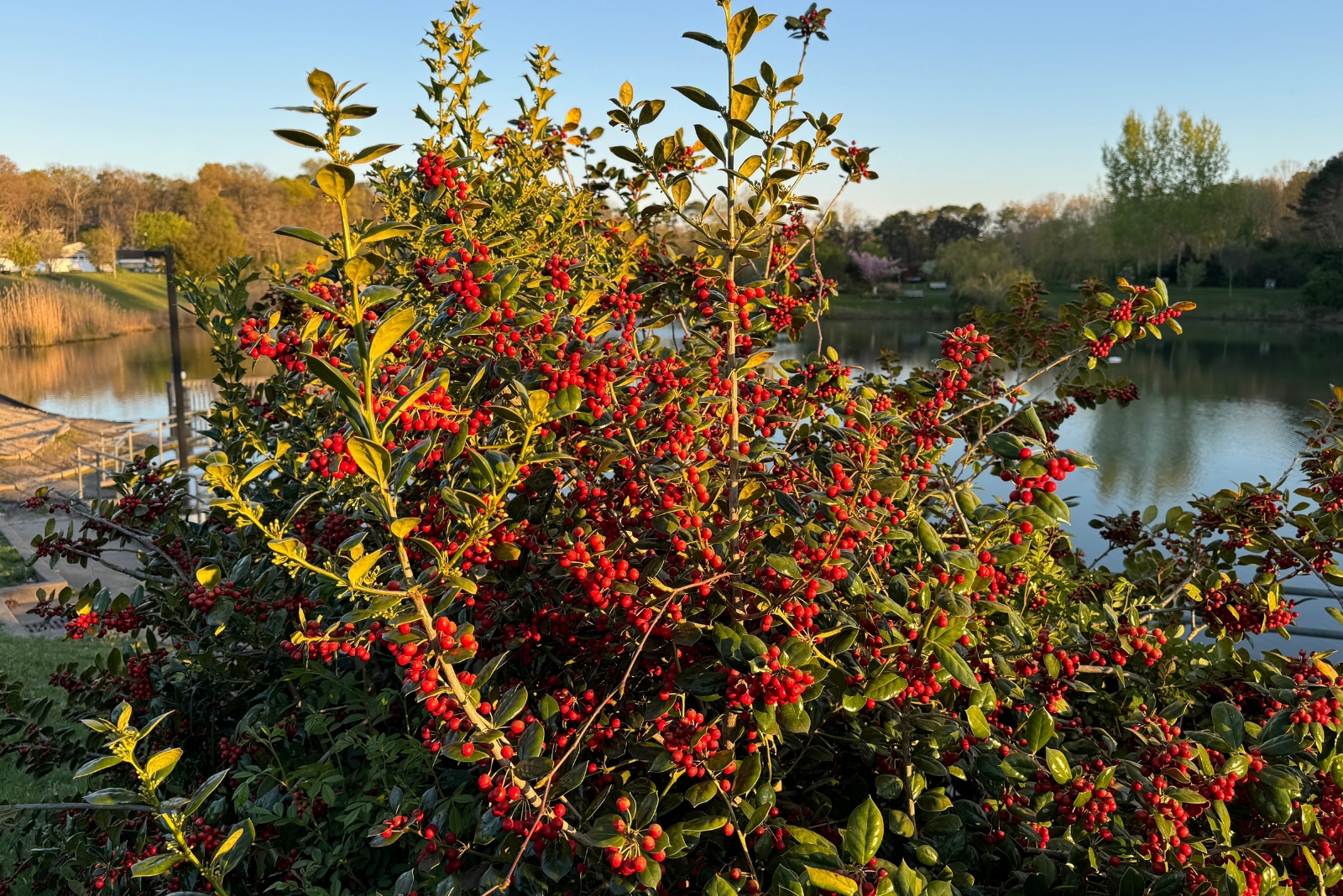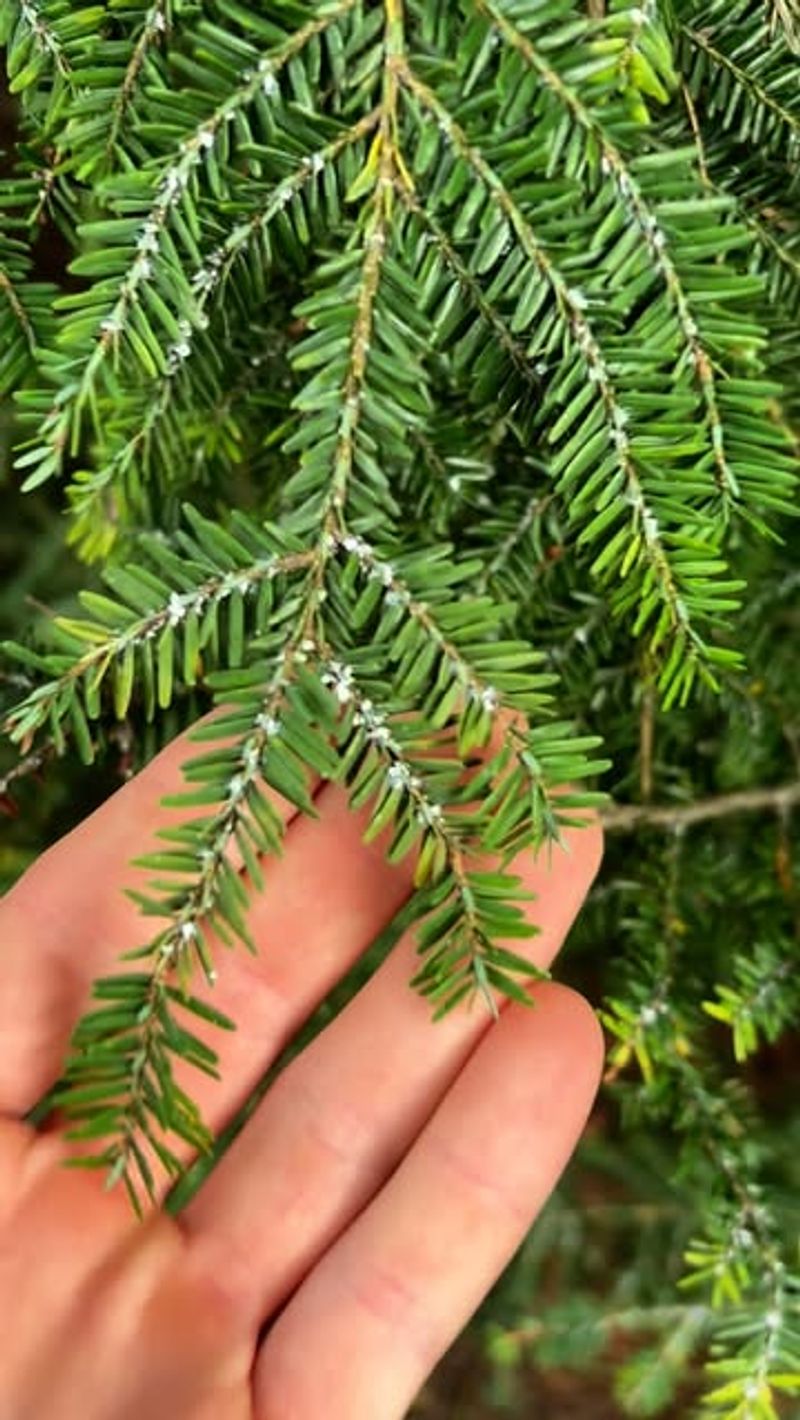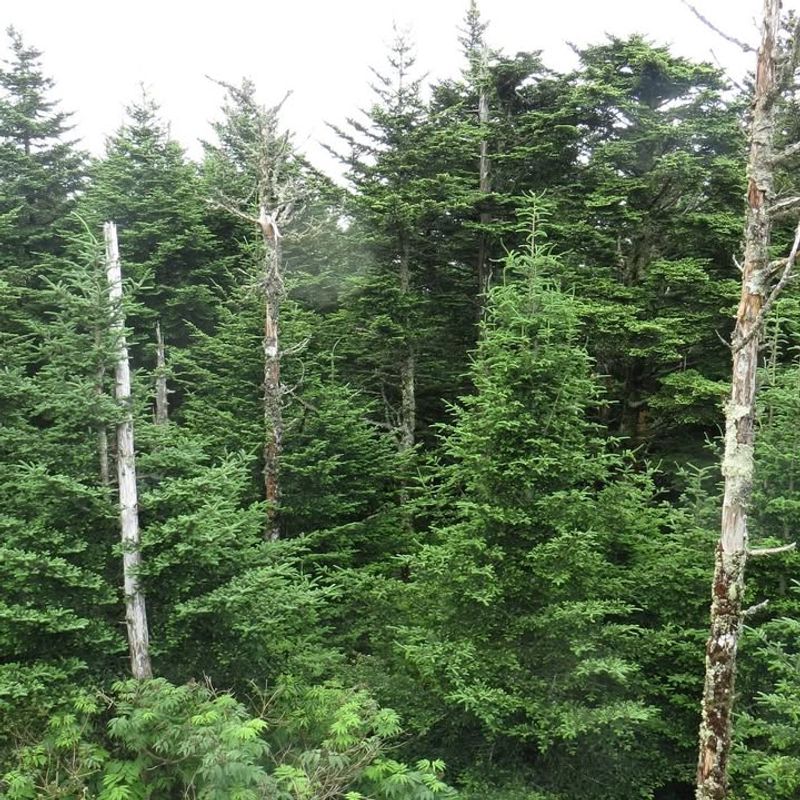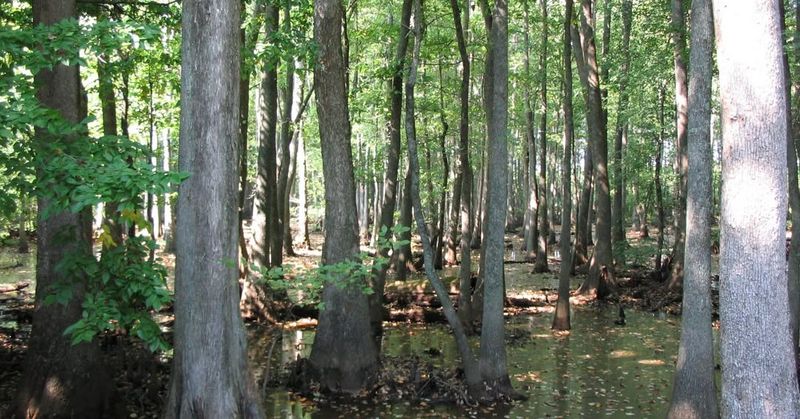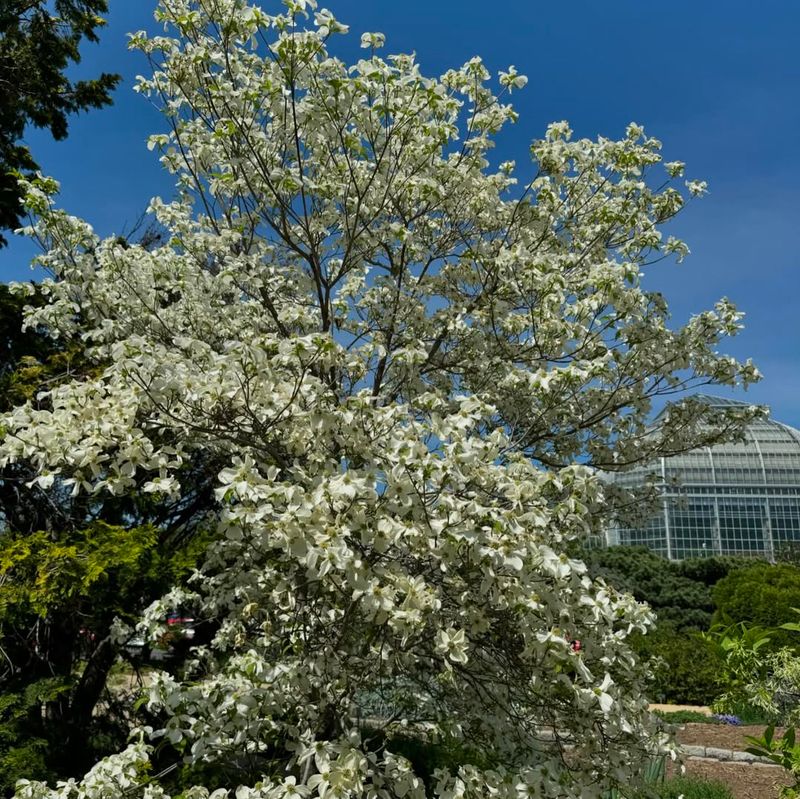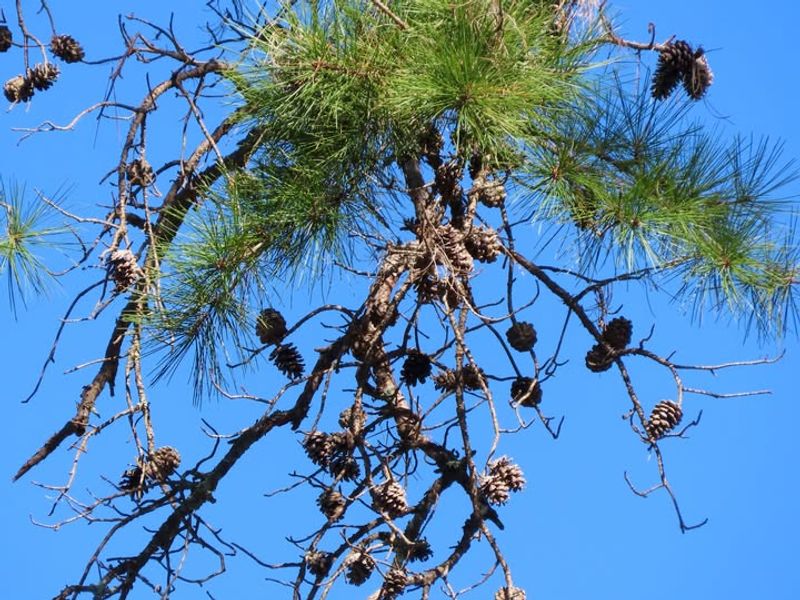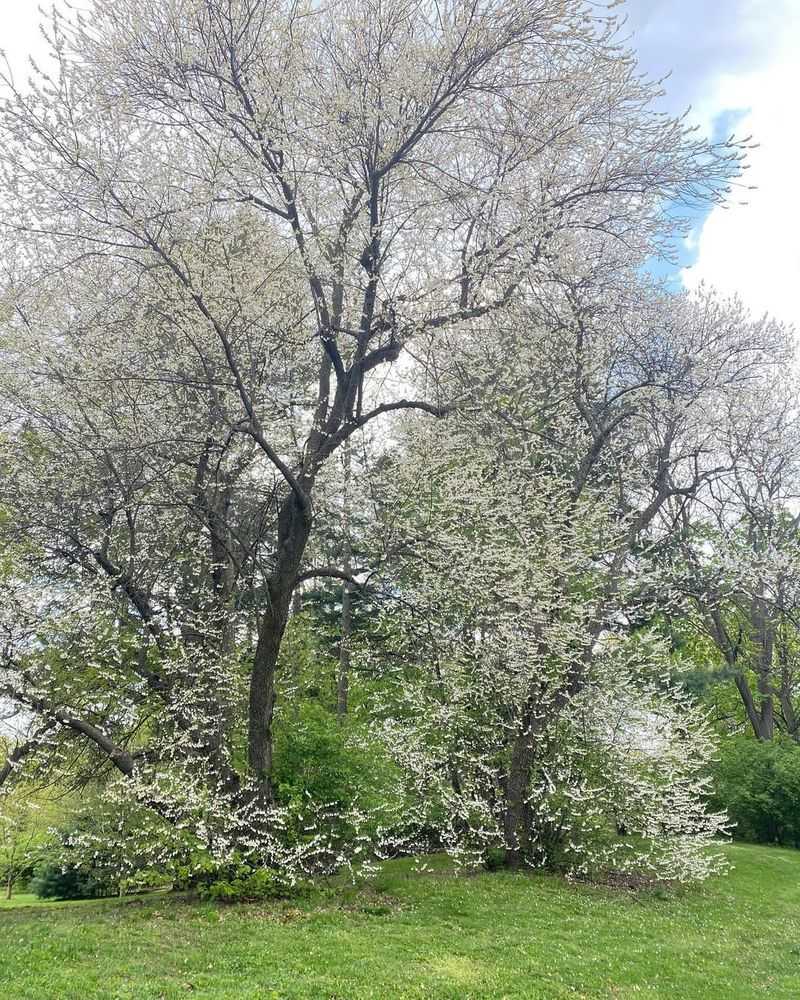Not all trees in North Carolina are just decorative—they’re protected by law. I learned this after nearly trimming a neighbor’s protected tree and realizing the consequences.
Knowing which ones to keep can save you both money and headaches. Respecting these trees helps your garden stay beautiful and legal.
1. American Holly
Bright red berries and shiny evergreen leaves make American Holly a favorite during winter months. Property owners across North Carolina often discover these beauties growing naturally on their land.
Cutting one down without checking local ordinances could land you in hot water. Many counties protect this native species because it provides critical food for wildlife when other sources are scarce.
Before removing any holly, contact your local forestry office to understand the regulations in your area.
2. Longleaf Pine
Once covering millions of acres, Longleaf Pines have become increasingly rare throughout the state. North Carolina has implemented strict protections to help restore these majestic trees to their former glory.
Their incredibly long needles and fire-resistant bark make them ecological superstars. Removing one from your property without proper permits can result in serious fines.
Conservation groups work tirelessly to replant these pines, so destroying mature specimens undermines decades of restoration efforts across the region.
3. Live Oak
Massive, sprawling branches create natural canopies that have shaded North Carolina communities for centuries. Live Oaks often become beloved landmarks that entire neighborhoods rally to protect.
Many municipalities designate particularly old or large specimens as heritage trees with absolute cutting prohibitions. Even on private property, removing a protected Live Oak typically requires special hearings and approval.
Fines for unauthorized removal can exceed ten thousand dollars, depending on the tree’s age and community significance.
4. Bald Cypress
Rising from swampy waters with their distinctive knees poking up, Bald Cypress trees create haunting, beautiful landscapes. North Carolina wetland regulations often protect these trees as essential components of flood control systems.
Their root systems stabilize shorelines and filter pollutants from water sources. Removing them can violate both state forestry laws and federal wetland protections.
Landowners should always consult environmental agencies before considering removal, as dual jurisdiction can mean double penalties for violations.
5. Eastern Hemlock
Mountain communities treasure these graceful evergreens that thrive in cool, shaded ravines throughout western North Carolina. Unfortunately, invasive pests have put Eastern Hemlocks under severe threat.
Protection efforts now safeguard remaining healthy specimens, making unauthorized cutting illegal in many jurisdictions. Conservation programs actively treat and monitor these trees to prevent total loss.
Penalties for cutting protected hemlocks reflect their endangered status, with fines designed to deter any removal of surviving trees in the state.
6. Atlantic White Cedar
Coastal swamps harbor these increasingly rare cedars that once supplied timber for shipbuilding and shingles. Atlantic White Cedars grow slowly in specialized wetland conditions found only in certain North Carolina regions.
State and federal agencies monitor remaining stands carefully, restricting any harvesting or removal. The wood’s rot resistance made it historically valuable but also led to overharvesting.
Current protections aim to restore populations, and cutting one can trigger investigations from multiple environmental agencies with compounding fines.
7. Fraser Fir
Famous as Christmas trees, wild Fraser Firs grow naturally only in North Carolina’s highest mountain peaks. Commercial cultivation is permitted, but wild specimens receive protection as unique high-elevation ecosystem components.
Climate change and invasive insects threaten wild populations, increasing enforcement of cutting restrictions. Removing wild Fraser Firs from public or protected lands brings criminal penalties.
Even on private mountain property, local ordinances may restrict removal to preserve the distinctive character of high-country forests throughout the region.
8. Tupelo Gum
Swollen bases and brilliant fall colors distinguish Tupelo Gums in North Carolina’s wettest areas. Beekeepers particularly value these trees because they produce the famous tupelo honey.
Wetland protection laws often shield them from removal since they stabilize waterlogged soils and provide wildlife habitat. Their ecological importance has led to strict local ordinances in counties with significant wetland acreage.
Cutting one without environmental permits can violate multiple regulations, resulting in fines from both forestry and water quality agencies across the state.
9. Dogwood
North Carolina’s state flower comes from the Dogwood tree, giving it special cultural significance throughout the region. Spring blooms transform neighborhoods into stunning displays of white and pink flowers.
Many cities designate Dogwoods as protected ornamental species in municipal codes. Heritage tree ordinances frequently include mature specimens that contribute to community character.
While not universally protected statewide, local regulations often require permits for removal, especially for large or particularly beautiful trees in residential areas.
10. Shortleaf Pine
Piedmont forests once contained vast stands of Shortleaf Pines that supported entire communities and industries. Decades of harvesting without replanting drastically reduced their numbers.
North Carolina now protects remaining mature specimens in certain conservation areas and offers incentives for restoration planting. Unauthorized removal from protected lands carries significant penalties.
Even private landowners may face restrictions if their property falls within designated restoration zones where forestry agencies prioritize bringing back this once-dominant species.
11. Carolina Silverbell
Delicate white bell-shaped flowers dangle from branches each spring, making Carolina Silverbells treasured native ornamentals. Mountain communities in North Carolina particularly value these understory trees.
As native species decline due to development pressure, many counties have enacted protections for remaining wild specimens. Their importance to native pollinators adds to their protected status.
Removing them from protected natural areas or designated conservation zones brings fines, and even private removal may require permits in counties with native plant ordinances.

